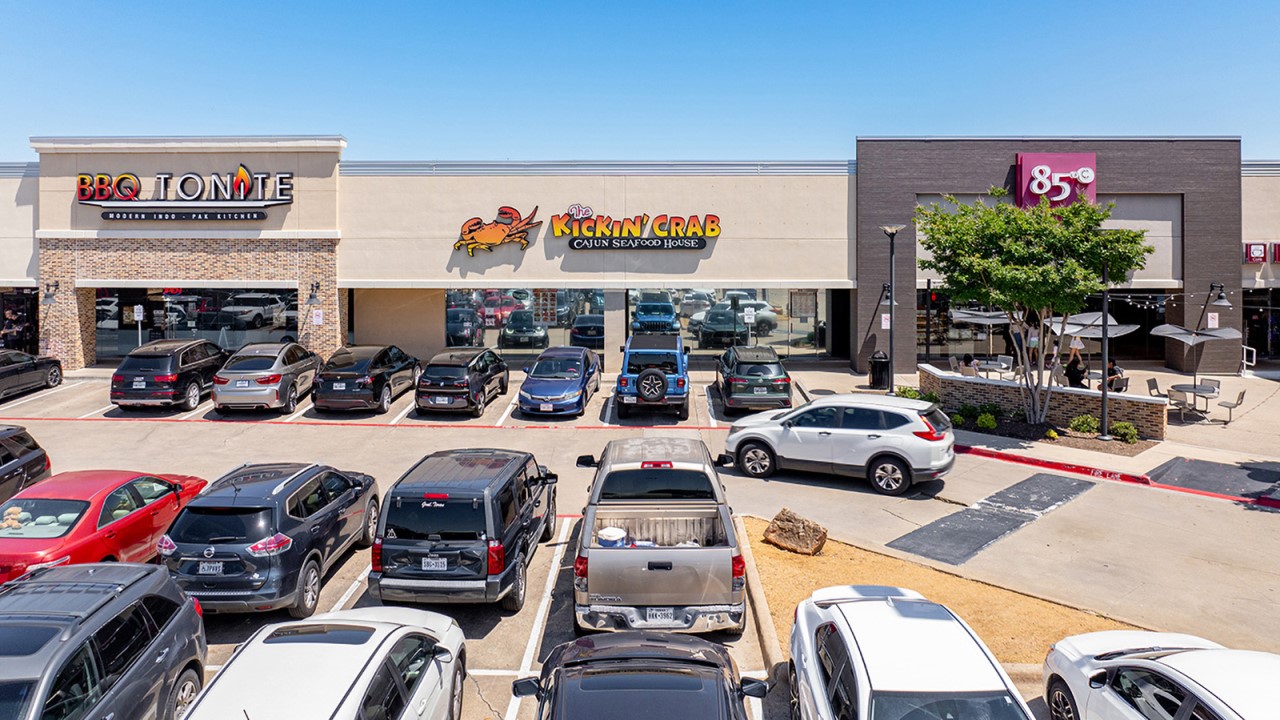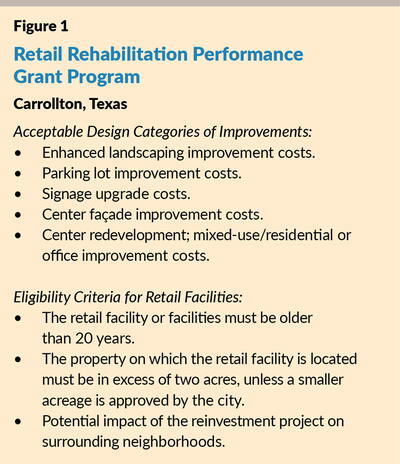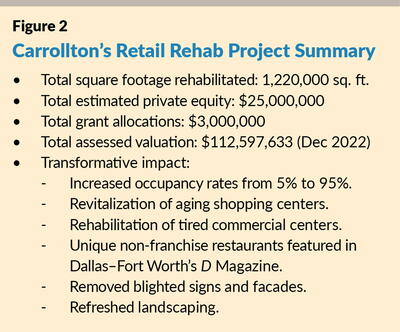
Across the United States, inner-ring suburbs are struggling with visible signs of wear and tear in their once-thriving prime retail centers, mostly located at prominent intersections with high visibility. The surge in competition from revitalized metropolitan downtowns and outer-ring suburbs poses formidable challenges for these transitional communities, manifesting in the decline of property values and market share. An amalgamation of outdated municipal planning practices, aging retail centers, evolving retail formats, demographic changes, limited market opportunities, and rivalry with large-format retailers contribute to the decline many of us are facing.
These retail centers serve as veritable barometers of community health and vitality. While it may seem convenient to entrust their revitalization to the private sector, the reality often demands city intervention, even when the ownership is accustomed to modest returns. Collaborative efforts between the public and private sectors are imperative to breathe new life into these areas. Addressing challenges such as retail over-zoning, fragmented ownership, outdated designs, and the aging character of these centers is paramount. Additionally, a proactive approach is required to tackle rising construction costs and interest rates and supply chain disruptions.
Revitalizing key commercial areas demands innovative thinking, as the long-term well-being of a community hinges on its ability to provide accessible goods and services for its residents. The ramifications of inaction are severe, encompassing lost tax base, the deterioration of neighboring commercial development, negative impacts on adjoining residential neighborhoods, job declines, and an overall erosion of the economic health and growth of the community. To counteract this trajectory, cities must adopt best practices and devise strategies for the productive use and reuse of the underutilized retail centers. Recognizing current trends in retail markets and repositioning these centers to mirror the mature nature of the surrounding communities becomes a pivotal factor in fostering long-term community health and economic vitality.
Retail Rehabilitation Performance Grant Program
Established by the city of Carrollton, Texas, located within the Dallas/Fort Worth metroplex, the Retail Rehabilitation Performance Grant Program provides financial incentives to existing retail shopping centers for rehabilitation and/or redevelopment. The program is receipt reimbursable with the goal of rehabilitating the retail facilities for aesthetic or architectural appeal and any improvements that would otherwise enhance the tax base.
As an inner-ring suburb, Carrollton’s major corridors needed more than just maintenance of the infrastructure. Refreshing the “windshield view” of these corridors became a city council initiative, and a holistic approach was necessary to formulate a plan that encompassed everything from the center line of the median to the building face on private property. It required updating the city’s general design standards, sign regulations, creating urban design strategies for entry signage, median improvements, landscaping, screening requirements for HVAC units, and regulating anything that could potentially create unnecessary blight. The program was created to encourage commercial property owners to become aware of the need to rehabilitate their sites and implement building improvements to further increase their potential for higher returns and a superior tenant mix.
Carrollton Town Center
A once-thriving 154,263 square foot retail center Carrollton Town Center had fallen into disrepair with a disappointing 20% occupancy rate. Despite the city’s efforts to encourage redevelopment, the site’s multiple ownerships and differing expectations hindered progress. However, it was evident that the financial feasibility of the project wouldn’t be profitable without significant rental price increases.
The city was willing to offer incentives, but the project was deemed too risky by the prospective developer, who wasn’t willing to secure the multiple parcels that it would take for such a development. Eventually, in 2014, a retail development group purchased the center with plans to redevelop it as a destination retail area catering to the Asian American population of northwest Dallas County.
It became obvious that the retail market was shifting, and for whatever reason, Carrollton consumers simply didn’t provide sufficient support to keep the existing stores profitable, with the consecutive closures of some major chains, such as Hobby Lobby. These new investors felt they could connect the product, demographics, and the right location to make their venture profitable.
With limited control over the property’s and site’s architectural character or tenant mix, the ownership was not obligated to involve the city beyond basic permit review. It was understood that the center would merely back-fill the tenant spaces without any façade or site improvements. The city stepped in and became an equity partner by providing a nominal performance incentive grant.
Today, this center, together with the surrounding areas, has exploded and there is evidence of extremely high increased value to the tax base. In 2023, Carrollton Town Center had a total of 3.3 million annual visits with an average dwell time of 71 minutes. This represented a 91.1% increase in foot traffic over the previous three years. It ranked as the third most visited neighborhood center within 15 miles, and the fourteenth most-visited shopping center in its category in Texas (in the 98% percentile).
There is an obvious increase in property tax through the rehabilitation efforts, and by removing blight and helping create an improved shopping experience, there is noticeable increase in the tenant base leading to an increase in sales tax. Since the rehabilitation, the property value almost doubled, and the total estimated taxes collected increased accordingly over a 10-year period. The Carrollton Town Center has generated approximately 850 direct jobs and has had more than one million people visit the center at least 10 times per year. A major factor: the center is located within a half mile of the renowned Trinity Mills Station DART light rail station and two major highways.

Program Administration
In this era of “faster, cheaper, and better,” transforming the organizational process has become a contentious priority for many governmental jurisdictions. While typical municipal economic development departments administer all incentive-related programs, the doctrine of placing all functions related to “taking vision to reality” should be administered under a single management control. This is especially true when it comes to public-private partnership projects, where there is a need to manage the project from concept to final occupancy, allowing for a more streamlined and efficient process.
It’s crucial to establish a comprehensive development services department to serve as the primary point of contact for developers where all functional staff are knowledgeable of the city’s vision — from establishing private partnerships to building and development regulations — enabling more effective evaluation and monitoring of incentive programs. The department is functionally able to anticipate potential complications and provide practical problem-solving strategies to solve complex economic development issues. Negotiating and programming incentives can be tied to milestones in the permitting and inspection process, ensuring compliance and timely project completion. In addition, the development services department can proactively identify potential incentive opportunities and connect developers with relevant resources. And because of the “one-stop shop” process, there is no need for collaboration between multiple departments with possibly contentious priorities.
Grant Details
The Retail Rehabilitation Performance Grant Program is a matching grant program based on receipt reimbursement. This means that the approved reimbursement, which consists primarily of cash payments, is payable upon successful completion of stages of the improvements or redevelopment as outlined in an incentive agreement between the city and the owner of the retail facility. The city may elect to make a grant in an amount up to 100% of the cost of the improvements.
The funding source of such a program can be left to each municipality. However, during the initial onset of the program, Carrollton chose to seek $2 million as part of the bond election process. Due to the success of the program, the city elected to fund the program subsequently through the general fund balance. And in no instance are such grants to exceed $1 million of public funds for each grantee.

Ready the Environment — A Best Practice
Cities and counties hold the power to institute impactful strategies to facilitate the transformation of the retail landscape. This can be accomplished by establishing policies, revising outdated codes and ordinances, considering judicious rezoning proposals, and establishing incentives policies to promote appropriate revitalization and redevelopment of aging retail centers. This approach has emerged as a best practice with a systematic process involving a comprehensive analysis of existing sites, creation of a grading schedule, and development of tools and strategies to help guide the municipal practitioner. The understating of market conditions, occupancy rate assessments, and criteria for site evaluation play a pivotal role in establishing a pathway for change. These tools further guide the identification of issues, recommendation of warranted conditions of design changes, and assistance in selecting appropriate funding strategies. Of course, a crucial aspect of this is gauging public sentiment and the willingness of the political will for establishing a framework within the community to “ready their environment” for investment.
As Carrollton’s built environment continues to age, the Retail Rehabilitation Program will need to be re-evaluated to include other commercial properties on the major arterial thoroughfares through additional public/private partnerships. Having come as far as we have, we stand ready to tackle future improvements on the horizon.

RAVI SHAH is director of development services for Carrollton, Texas.
New, Reduced Membership Dues
A new, reduced dues rate is available for CAOs/ACAOs, along with additional discounts for those in smaller communities, has been implemented. Learn more and be sure to join or renew today!
